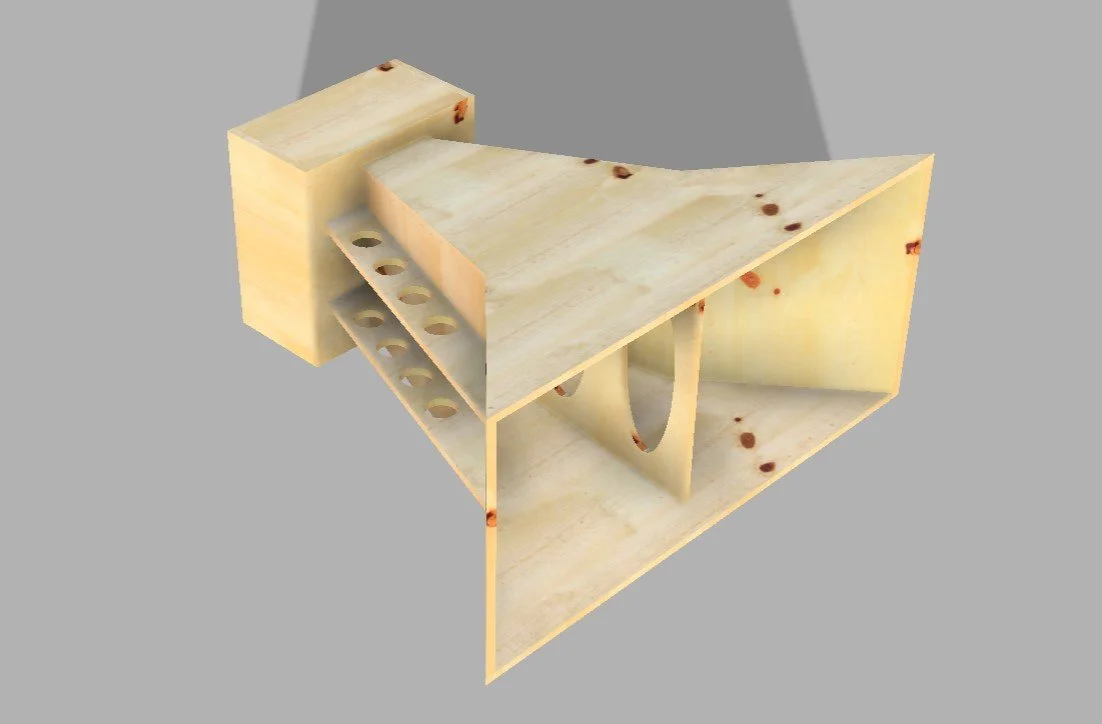In collaboration with Joe Summers and Alfie Brooks at the Berlin venue and art space 90mil, I’m designing a sound system, which will (hopefully) be capable of delivering full, inspiring sound, with generous headroom in the 300qm project room, for a wide variety of music, live and pre-recorded. The priorities of the design are bass extension below 30 hz, minimal number of cross-overs, very high efficiency, and a non fatigueing, yet physically impactful sound. I want the type of system that gives your body a thrill without hurting the ears and sounds as big as the space.
For the bass section, we decided to build the Skram subwoofer, designed by Josh Ricci. It’s a hybrid bandpass design with efficient output to below 30hz. The bass sounds clean and impactful. I really like this design so far.
For the highs, we’re using Alec Lansing 511E horns. These are versions of the 511b sectoral radial horn that we’re modified (often sloppily) by the Altec factory to accept a 1.4'“ compression driver making them more suitable for high spl PA use. Well damped, and driven by a Faitalpro 146hf, they have none of the harshness or ringing that the Altec radials are known for. It’s a silky hi-fi sound. They’re fun to listen to and cool looking, but I’m still not sure I like the sound as much as some modern pa horns like the RCF HF94.
For the midrange, I’m designing my own front-loaded horn. Since we don’t have any size restrictions, I realized it would probably be possible to make a big enough horn to cover 100hz all the way up 1khz to meet the compression driver. The horn is a 90 cm long, two-segment conical horn with a 110cm by 50 cm mouth. The first conical section expands slowly to load the driver, and the second section expands quickly to reach the required mouth size and to give a 90 degree horizontal coverage pattern. It’s like a very big version of the classic constant directivity horn. After listening to the first prototype, I realized the horn would need a phase plug, as well as reduced throat area in order to reach 1khz. It sounded mushy and dark, since there were cancelations in the 500-800hz range. The phase plug took a lot of experimentation to get right (right, as in close enough, I’m sick of carving random shapes out of foam! ) The weather has been terrible, so I haven’t been able to take proper measurements, beyond what’s needed for prototyping, but I can tell that the present version sounds and measures much better. Below is an on-axis, ground-plane measurement taken outdoors (without calibration). The sensitivity seems to be around 105db 1w/1m and response seems pretty uniform over the 90 degree horizontal pattern. The sound is very neutral and punchy, without a hint of horn honk. Compared to the MT-130s from Roger, these sound more like my headphone, however the MT-130s might be a bit more fun to listen to. Real data coming soon!

